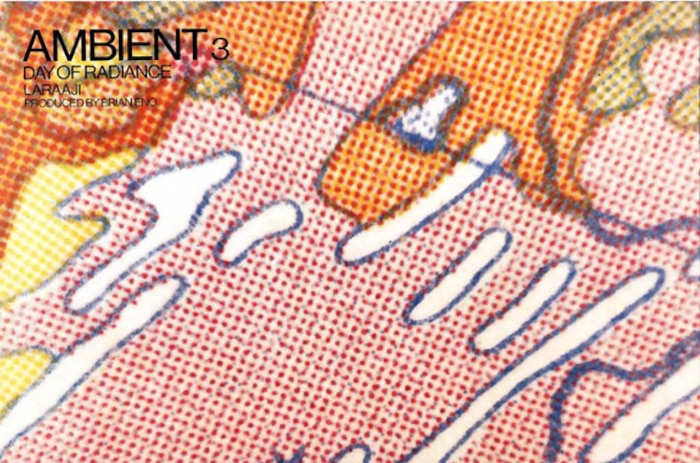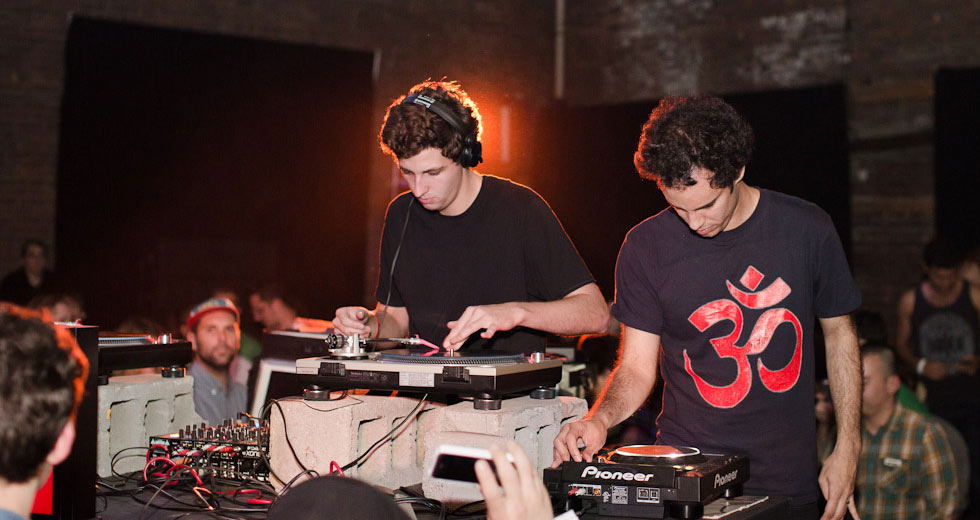Interview: Laraaji
In Simon Reynolds’ Taking Manhattan (By Strategy), the cultural critic detailed Brian Eno’s fertile creative years in New York. One of the projects mentioned is 1980’s Day of Radiance, an ambient album featuring Laraaji – a zither player that Eno discovered busking in Washington Square Park. We caught up with Laraaji – who still plays, in addition to leading workshops on music and laughter meditation – to find out more about the album.
How did you first get in touch with Brian Eno?
I find that when I perform with my eyes closed, I more easily relate to energy than human beings.
He left a note for me in my busker’s zither case when I was playing in Washington Square Park one evening in 1978. I didn’t see him, because my general style of playing was with my eyes closed and sitting on a mat on the ground. It was a very polite note, asking my to excuse the condition of the paper and asking me if I would be interested in discussing a recording project he was working on.
I had only heard of him through other people trying to tell me that my music sounded like the music in Eno’s category. I must have heard about it about a month before, but I didn’t have a chance to check out his music. So the next day I returned his phone call and he invited me to his residence to talk.
What did you make of him?
Quiet. Very scientifically astute. He introduced me to some scientific project he was working on regarding playback speakers in his apartment. So I got that he was gentle, very easy to be with.
You mentioned that you often perform with your eyes closed. How did you come to that?
I find that when my eyes are closed, I more easily relate to energy field rather than human beings. So focusing in on this creates a bigger sound – and a more spacious experience.

Can you talk a bit about recording the album with Eno?
The music I played for Brian was hammered zither music, and in the second half of the session I went into my more meditative and calm music, which he hadn’t heard. After we listened back to the masters, we realized there was some distortion on the softer music because there was machinery in the building that was getting picked up while I was playing these softer passages. It delayed the release of the album for six months until we found a studio in the city where we could record.
When you were discussing how to play on the album, was there anything that stuck out to you?
I do remember that Brian was trying to explain what “ambient” was, and I didn’t have an easy time getting my head around it. Probably because I was already doing it. [laughs] He said it was music you can be in space with, but you don’t necessarily have to listen to. It’s an environmental context, creating a space for people to think in, to walk in, to be themselves in. Music with no beginning or ending.
Tell me about the dulcimer and the zither that you used for the recording. You transformed them, right?
Yes. It’s technically called an autoharp. I noticed it years ago when I was doing stand-up comedy in the Village. (The instrument would show up with bluegrass bands.) I had this cosmic direction when I was in a shop pawning my Yamaha guitar. This voice, intuition, direction suggested that I don’t swap the guitar for money, but that I instead swap it for another instrument.
So I got an Oscar Schmidt Autoharp and took it home and experimented with some of my favorite piano and guitar chords with hammers, brushes and bows – and that developed into a very groovy sound to hang out with. That was well into my years of meditation, and I found it to be a wonderful instrument to sit with in a meditative way. I eventually found that I could electrify it and then took it onto the sidewalks and started busking. That was between 1975 and 1979.
And no one else was really playing this instrument in that way.
Yes, that’s correct. I did borrow some techniques from other instrument styles. I adapted the style of Dorothy Carter and how she played the hammered dulcimer for instance. But my approach to the zither is by trial-and-error and exploration and then developing my own vocabulary.
You’ve gone on to teach workshops on laughter meditation. How does that fit into your music?
My approach to playing the zither is trial-and-error and exploration.
I’ve always been, in some form, a comedian or comedy writer. My music got me invited to lots of New Age conferences where I gave workshops involving music and relaxation. When I got into laughter meditation at the suggestion of a guru in the ’80s, it appealed to me because I could do both the music workshops and the laughter workshops.
What does a workshop like that entail?
You can talk about how to use laughter to relax, the health benefits of laughter and how to go into meditation after a good laughter release.
What are the health benefits of laughter?
Several. Heavy laughter – 15 minutes or so – will boost the immune system by working the thymus in the chest, which is the seat of the immune system, to increase the production of T cells. Also, laughter works on the pituitary in the brain to stimulate hormones like endorphins, dopamine and serotonin. Laughter expands the endothelium, the lining of the blood vessels, which promotes the increase of the flow of blood. Heavy laughter also expands the capacity of our lungs to inhale fresh air and exhale stale air.
Laughter opens us up to our playful, spontaneous nature.
It reduces stress and tension, which we all know. It removes the cynicism of difference between two people. The shortest distance between two people has been called laughter. I’d imagine that the shortest distance between you and yourself is laughter. It softens, drops armor, opens us up to our playful, spontaneous nature.
I find it interesting that the meditation isn’t necessarily based around jokes.
Well, my role as a playshop facilitator is to get people into a safe zone. The way I try to get them into a playful spirit is by creating games and interactions. More laughter occurs because of social interactions than jokes.
Can you talk about a game or interaction you do in a workshop?
Sure. There was a French doctor who observed that there was a happiness center in our brains. He said that we could access this part of our brain if you hold a certain smile that accrues wrinkles around the eyes. So I made an exercise that asked participants to smile from “one” to “ten.” Hold “ten” for ten counts. Then smile backwards down to “one.” Then I start to say random numbers and ask them to smile those numbers. After that I ask them to move around the space chanting the mantra, [sings] “I have come to see your smile!”

